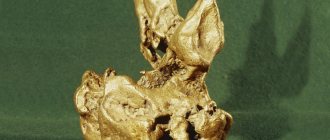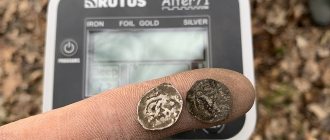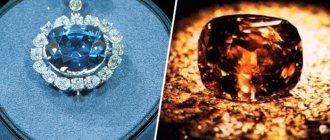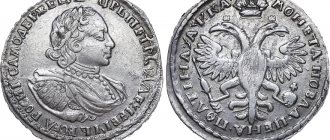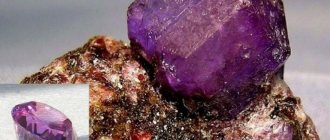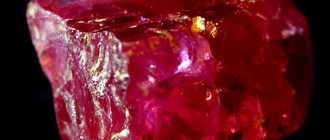Gold nuggets are rarely found in large sizes. After all, even samples weighing one hundred grams are considered a great achievement for gold miners. The smallest nuggets do not exceed ten grams in weight. Medium are those whose weight varies from ten to one hundred grams. The mass of large pieces can reach one kilogram, and very large ones - ten kilograms. Nevertheless, nuggets whose weight exceeds this limit are considered gigantic, and their discovery becomes a sensation. As a rule, heavier stones are found at a fairly great depth in the bowels of the earth, although in rare cases it was enough to dig just a small hole to find them.
Most often, gold nuggets are found in the territory of alluvial deposits of this precious metal. In some cases, finds weigh several kilograms. History knows about ten thousand cases of the discovery of large gold nuggets, the weight of which exceeded the ten kilogram mark. Unfortunately, their fate often followed the same pattern: everyone was told about them, given big names, and then... melted down. The only exception is the largest Russian find, which today is the largest nugget of gold not used for jewelry production. Although history has known heavier natural stones of gold.
What is a gold nugget: it is, composition, what it looks like, structure
Pure gold of the highest standard is rare in nature. Most often, the precious metal is part of ores, minerals, and is sometimes present in river sand. Native gold - a piece of precious metal with a minimum of impurities - is a rare and valuable find. It contains impurities of various metals and minerals (up to 20%). The color of gold depends on the composition of impurities. Native metal can have a color from white to yellow in all shades.
If the ingot has a lot of copper, then it has a pinkish tint.
Golden Nugget
Holtermann plate
The “Holtermann Plate” is the largest gold nugget on the planet, which was extracted from the depths of the Earth in the fall of 1872. Gold miner Holterman and his colleague Hugo Beyens found a piece of gold weighing 235 kilograms. After melting the nugget, it turned out that it contained only 83 kilograms of pure gold ore. The rest of the piece consisted of quartz, iron and other impurities. However, despite this, the “Holterman Plate” is recognized as the largest gold nugget included in the Guinness Book of Records. Unfortunately, the piece of precious metal has not survived to this day. All information about him was obtained by scientists from entries in the personal diary of Hugo Beyens.
The story of the first gold nugget in Rus'. The phenomenon of the "gold rush" of the mid-19th century
Despite the fact that gold products in Rus' began to be made since ancient times, imported noble metal was used. The fact that the Russian land is rich in gold deposits was known from ancient historical sources. Finished gold items were found at the settlement sites of the ancient Slavs. 1745 is the year when native gold was discovered in the Urals, and two years later the first mine, the Initial mine, was opened on this site.
The 19th century is known for the beginning of the so-called gold rush in Alaska. Dreaming of fabulous wealth, prospectors left their homes and risked their lives.
The gold rush also did not spare Russia. Since the beginning of the 19th century, prospectors tried to conquer Siberia and the Far East, Kuzbass and Tom.
Why is the metal often confused with pyrite? What geologists say about gold nuggets
With the onset of the gold rush, ships filled with pyrite sailed from America to Europe. Due to its external resemblance, this breed was often confused with gold. In fact, pyrite is iron pyrite, also called fool's gold or the stone of madmen. Gold and pyrite can be distinguished by several characteristics:
- Form. Pyrite is a crystal-shaped stone with sharp edges; gold has soft, rounded edges.
- Smell. Pyrite contains more than 50% sulfur, so it has a specific rotten smell. Noble metal has no odors.
- Size. Pyrites can occur in different sizes. Gold is more often found in bulk, less often in small pieces, and even less often in large ingots.
- Hardness. Noble metal is very soft and malleable, so a ligature is used to make jewelry or other products. A gold bar can easily be pierced with a needle and can be tasted on the tooth. Pyrite is hard.
Gold nuggets
Pyrite and gold are similar in color, brilliance, and density.
Geologists studied the similarities between the two rocks:
- A. Betekhtin “Pyrite group. Mineralogy Course";
- K. Gurlitt “Manual Mineralogy”;
- A. Smolin “Golden nuggets of the Urals”.
Only centuries later, pyrite ceased to be known as a deceiving stone, and people learned to use its beneficial properties.
Oliver Martin, 36 kg
One of the largest gold nuggets was found in the USA, in the state of California. It was named after the person who found it - Oliver Martin . This happened in 1854. Oliver at that time was slightly richer than the average tramp.
He and his friend drank heavily and walked out of the bar, heading to the camp. But an incredibly heavy downpour began, and the partners found themselves in the rain at the foot of the mountain. The rain caused flooding in the area.
The water that poured from the cliff washed the friends straight into the stream. Martin almost drowned, but was able to grab onto the branches of a tree and hung like that until the morning. Then the water finally went away.
But his friend, John Fowler, could not survive the flood. Oliver decided to dig a grave for him near the rock. Having dug a hole, he suddenly came across a huge nugget, it was the size of a bull’s head.
The lucky owner of a huge piece of gold became rich, the nugget was sold for $22,700, and was later demonstrated in different cities of the United States. Martin himself became rich.
Table: characteristics of native gold
What samples are classified as nuggets? A gold nugget is considered to be a single ingot, the minimum weight of which must reach 2 grams. There are known cases when nuggets weighing almost a hundredweight were found.
Native gold has the following characteristics:
| Property | Description |
| Color | Thick yellow, giving off a silvery sheen. It can fade and become brighter, acquire shades: white, pinkish, greenish, reddish. |
| Transparency | Absent |
| Shine | Metal |
| Surface | It can be either smooth or rough. There are notches and grooves. Often a nugget is found “jacketed,” that is, the piece is covered with some other rock. |
| Hardness | Noble metal is very soft. Mohs scale 2.5-3 |
| Form | There is no need to expect complete symmetry in the outline of a piece of gold bar. It may look like a geometric shape, an animal, a plant, a flat leaf, a feather, or a branch. |
| Try | From 800-950. A gold nugget contains minimal impurities. For example, metal of 585 standard cannot be considered native. |
How to determine the presence of precious metal in a stone
The authenticity of native gold is determined in the field or at home using a folk method.
What to do:
- If the golden inclusion under the mineral layer is barely noticeable, the stone is chipped or broken. When struck, the precious metal does not crumble.
- Having provided access to the inclusion, its surface is scratched with a steel needle.
- The scratched area is examined through a magnifying glass. The gold-containing element will not be destroyed; lines will remain on it where the needle is pressed.
The presence of gold dust in a stone is checked using iodine. An alcohol tincture from a pharmacy is suitable.
What to do:
- Grind the mineral into powder.
- Place the mineral powder in a jar or other container.
- Pour iodine into the powder and stir until smooth. Wait until a precipitate forms.
- Immerse a strip of white paper towel or filter paper (2 cm wide) into the liquid so as not to stir up the sediment. Immediately remove and dry at room temperature.
- The action of the previous paragraph is repeated 4–7 times.
- After drying, the paper is placed on a heat-resistant saucer and set on fire. If the stone contains precious metal, the ash will be purple in color.
There are few stones containing gold-bearing inclusions. The precious metal is found in granite, quartz and quartz diorites. Not all shiny minerals are classified as valuable specimens. But varieties of pyrite, sphalerite, galena and stibnite often lie next to the precious metal.
See an alternative option for finding gold:
Hypotheses for the formation of gold nuggets
There are several theories about where gold nuggets come from in the ground.
- Snowball. Gold is a very soft and malleable metal. The golden particles, moving and connecting with each other, stick together, like snowflakes forming a snowball.
- Sediment. Since gold is heavier than water, it sinks down. Gold particles are layered on top of each other until a nugget is formed.
- Large gold stones can fall apart under external influences. Such gold nuggets are very rarely found in nature.
- Blur. Many ancient gold deposits may be located in river or stream beds. The remains of gold veins are washed away by currents.
- Upper layer. All nuggets are located on the upper layers of ore. It has been proven by geologists that these places will definitely have gold deposits.
Endogenous origin of gold nuggets. Locations of nuggets today
One theory is that native gold is of endogenous origin. That is, it is formed in the bowels of the earth at a depth of several kilometers.
Today nuggets can be found in the following places:
- Gold-bearing veins up to 10 cm thick. Veins are cracks in the earth’s crust that are filled with ore. The thickness, that is, the thickness of the vein, can reach several tens of meters, but also several centimeters. Veins up to 10 cm thick are called veinlets and are often of no interest to gold miners, although precious metal can be mined there.
- Areas with active metal precipitants. Sulfites, quartz, and coal contribute to gold sedimentation. Therefore, areas with these rocks may well have nuggets.
- Mountain streams, dry streams. Precious metal flows into streams from mountain slopes. Because gold is heavy, it settles to the bottom.
- Depleted deposits. Geologists often conduct searches on an industrial scale. When large gold reserves are identified, prospecting ends. But small particles and nuggets of precious metal may remain there.
You can learn about the localization of gold deposits from the works and stories of geologists, as well as from old-timers of the area.
Gold mining - gold nuggets
Small, but smart
If we analyze the results of prospecting and exploration work for many deposits in the Verkhoyansk-Chukotka region, it turns out that for the majority of nugget placers, primary sources (quartz veins) were never found. In a number of placers, based on the degree of alluvial processing of nuggets (i.e. processing under the influence of constant water flows), it can be assumed that their displacement from primary sources is only a few hundred meters.
This is evidenced by both the weak roundness of the nuggets and the high (50% or more) quartz content. Nests of iron hydroxides are also often observed, among which sometimes there are remains of incompletely oxidized sulfides.
These features indicate a shallow section of bedrock sources. If we proceed from the above-mentioned hypothesis of N.V. Petrovskaya, then we can assume that only the “heads” of ore bodies were cut off, and in the immediate vicinity of the place where the nuggets were found there should be deposits in which the main reserves of the metal are concentrated.
However, as the history of gold mining testifies, prospectors often found such nuggets, but the most thorough searches for ore bodies were fruitless. Therefore, it can be assumed that the primary sources of nuggets are small gold veins, which in some cases can be completely destroyed.
In support of these conclusions, examples can be given where primary sources of placers with nuggets were discovered. And in all cases they were thin (up to twenty centimeters thick) veins with a nested distribution of metal. Since the inter-cluster areas, as a rule, are weakly gold-bearing, such veins are not of industrial importance. For large gold deposits with thick ore bodies (about 1 m or more), nuggets, alas, are not typical.
Interesting results were obtained when studying the morphological features of nuggets. When comparing the linear dimensions of nuggets with their weight, it was found that their length and width are, on average, proportional to their weight. However, this rule does not apply to the thickness of nuggets (Samusikov, 2005).
An analysis of the literature data regarding the fineness of nuggets, their sizes and their origin from thin veins shows that these are not regional features of the deposits of the Yana-Kolyma belt, but general patterns of nugget regions around the world.
The most famous deposits of gold nuggets found in Russia, photos without processing
According to geological maps, the largest gold deposits are concentrated in the territories of the Far East, the Urals, and Siberia. But it is not possible to find native precious metal everywhere.
- Natalka or Natalka gold-quartz deposit. The name is derived from the name of the daughter of the discoverer-geologist D. Aseev, Natalya. Located in the Omchak River basin, 390 km from Magadan.
- Nezhdaninskoye field. Located in Yakutia, in the Aldan River basin. The mine, discovered in the 50s of the last century, marked the beginning of the opening of the village of the same name.
- Olimpiadinskoye and Blagodatnoye. The largest deposits are located in the Krasnoyarsk Territory at a distance of 25 km from each other.
- Darasun gold deposit. Location: Trans-Baikal Territory, Chita region. The development of Darsun began 160 years ago.
- The Tash-Targanka River flows in the territory of Miass in Bashkiria. Now gold is not mined here, but literally 200 years ago Tash-Targanka produced so many nuggets that a gold-mining plant had to be opened in Miass.
- The moss swamp is located in the South Ural region, Chelyabinsk region. Gold is found here in bulk. The Bolsheshaldinskaya placer deposit is also located here.
- Sverdlovsk quarries. The main Ural gold deposits are concentrated in the Sverdlovsk region. Of these, 75% are placers. The Kamushki quarries are located 50 km from Yekaterinburg. Since the century before last, prospectors have been searching for precious metal here.
- Kajaran and Sotskoye fields of Armenia. Gold deposits located near the cities of Sotsk and Kajaran were discovered and developed under Soviet rule.
Wealth is nearby: 10 world record nuggets
Each of the gold nuggets found has its own story. The largest gold nuggets in the world include:
- Holterman plate. It was found in 1872 in Australia, named after the prospector Bernard Holtermann, a German migrant. The slab is also called the Australian giant: it weighed 235 kg, of which only 83.2 kg of gold. There is still controversy about this nugget: some scientists consider it simply part of a gold-quartz vein. Unfortunately, the slab was melted down, and only a photo remained of it.
- A welcome stranger. Another Australian find dates back to 1869, weighing just over 70 kg. In place of the nugget, only a pillar was left with the names of the miners - John Dizon and Richard Watts. In just 5 hours after discovery, the piece was crushed into small pieces and later delivered to England.
- Big triangle. In 1842, gold mine worker Nikifor Syutkin found a huge nugget, the weight of which was determined to be 36.2 kg when weighed. They managed to save the gold nugget, and it is kept by the Diamond Fund to this day. But the fate of the worker who found the triangle was tragic: with the money he earned, he went on a drinking binge, became an alcoholic and died as a beggar.
- Oliver Martin. Compared to Nikifor Syutkin, Oliver Martin, after whom the nugget was named, became fabulously rich. He was not a prospector and found the nugget quite by accident when he was digging a grave for his friend. The weight of the found ingot is exactly 36 kg.
- The hand of fate or the hand of Faith. The weight of this nugget is a little more than 27 kg. It was found in Australia in 1980 by the Hiller couple using a metal detector. The nugget was purchased by the casino, where it is still kept today.
- Horse head. A piece of gold, similar to the elongated head of a horse, weighs 13 kg 700 g. It was found in the Urals and is kept by the Diamond Fund.
- Camel. Another exhibit of the Diamond Fund weighs 9 kg 300 grams. In 1947, it was discovered by workers in one of the Kolyma mines.
- Irendyk bear. The nugget, shaped like the body of an animal, weighs 4788 g. It is an exhibit of the National Museum of Bashkiria, a national treasure of the country.
- Bunny ears. The nugget really looks like the head of a hare with characteristically shaped ears. This is a large 930 stone. That is, the metal is natural, practically without impurities. Weighs more than 3 kg. Found in the Southern Urals. Kept in the National Museum of Mineral Resources of the Russian Federation.
- Big holey. The ingot received this name because of its porous structure. But despite this, its weight reaches almost 3 kg. Found in the Urals about 300 years ago.
Normandy Nugget
Another name for the nugget is “Solid Normandy”. It was found in 1995 by miners working at a mine near the town of Calgourie (Australia). According to the data recorded in their diaries, the mass of a single piece of gold was 25.5 kilograms. After being melted down, it lost about 20% of its weight. The nugget was sold to the management of Newmont Gold Corporation. The gold bar, obtained after melting down a block of precious metal, is in the private collection of the Perth Mint.
Tools for searching for native gold. Table: the best metal detectors, parameters and prices
To search for gold on your own, you will need a miner's minimum. Tools needed for searching and processing metal:
- metal detector;
- metal washing tray;
- sieve or sifter;
- shovel;
- pick, chisel, hammer;
- magnifying glass, container for found metal.
Metal detectors are sold in specialized stores; they can also be bought inexpensively on Avito. It is recommended to choose equipment with the highest power and sensitivity to metal. Of course, high-quality equipment will not be cheap.
| Metal detector | Characteristics | Price |
| XP Metal Detectors Deus | detection depth – 1 meter, battery charge – up to 10 hours. | 62 thousand rubles |
| White's MX7 | Detection coverage – 1 meter 40 cm, waterproof, battery charging time – 20 hours. | 59 thousand rubles |
| Garrett ATX Deepseeker | Detects metals at a depth of 2 meters, works on all types of surfaces, light weight. | 154 thousand rubles |
Beach metal detector for gold
Methods for extracting gold from stone
Nuggets may contain additional mixtures, metallic and mineral. You can get rid of them by refining - purification. Refining methods:
- The dry method involves purifying gold through chlorine gas.
- Chemical or wet - separation of gold from impurities using various chemicals, such as acids.
- Electrolysis. In this case, the gold is separated using an electric current.
The methods are used both in laboratories and in industrial production, rarely at home.
